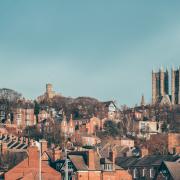There are new opportunities to be grasped for towns like Beverley in East Yorkshire, as Esther Leach discovers

Tourism, an increasingly important part of Yorkshire’s economy, is expected to play a much greater role in the future of the historic market town of Beverley. Work already going on to raise the East Yorkshire town’s profile is likely to take on more significance as neighbouring Hull prepares to celebrate its hard-won title of City of Culture 2017. The opportunities that result from the added attention and investment are likely to have an invigorating effect on East Yorkshire towns and villages in particular and the region in general.
As we go to print the City of Culture chief executive Martin Green was preparing to hold open meetings during which he will lay out his plans and the opportunities the event offers. He said: ‘As we move on from being a bidding city to a delivery city, I want to take the opportunity to lay out what happens from now for the Culture Company and how we plan from now to 2017 and beyond. I want to tell people how we’re recruiting, how the team will grow and how opportunities may arise from that. Importantly I want to use this opportunity for people to ask us questions and have input into the planning process.’
Beverley tourism marketing officer, Sharron Wilson, believes hotels, shops and attractions will benefit from Hull’s time as City of Culture. ‘There is bound to be a good knock on effect not just for Beverley but East Yorkshire too. City of Culture will help introduce new visitors to Beverley and East Yorkshire, hotels, shops and the many attractions here should all benefit. I visited Liverpool not so long ago and its time as a City of Culture has made such a difference. It’s not too dissimilar to Hull with its waterfront which has such vibrancy about it.’
Meanwhile tourism officers in Beverley are offering a different side of their town to visitors, one with a more cosmopolitan feel encouraging people to enjoy the many dining and shopping experiences it now offers. ‘That doesn’t mean visitors shouldn’t appreciate Beverley’s history and the wonderful walking there is on our doorstep but we also have some great shopping and restaurants we’d like everyone to experience. Flemingate – a £70m regeneration scheme in the heart of Beverley – is a big part of the new cosmopolitan appeal tourism officers want to encourage.

The new retail and leisure complex is attracting high street stores including Debenhams which is expected to open in time for Christmas next year plus a Premier Inn, a cinema complex and a number of restaurants. Up to 130 new homes have already been built as part of the development and work has begun on the new Beverley campus for the East Riding College.
Beverley is special

The splendid minster, market cross, the 15th century North Bar and street names such as Toll Gavel, Butcher Row, Ladygate, Hengate are evocative of medieval Beverley. Fine Georgian terraces and the railway station – a Grade II building opened in 1846, are further evidence of the historic significance of Beverley, once England’s 10th largest town and one of its wealthiest.
It is also a festival town – literature, food, early music, chamber music, folk music and puppets are just some of the things celebrated with much enthusiasm. The annual Beverley Food Festival has grown into one of the highest profile events on the town’s calendar. Its line-up of top chefs, local food producers, food workshops, huge array of stalls and family entertainment has proved a winning combination.
Beverley has a long horse racing tradition. There is evidence of a permanent course going back to 1690 and the first grandstand was built in 1767. Today the course hosts flat meetings along with many other events.
The town knows too it is special for one more very good reason - it has the wonderful Yorkshire Wolds on its doorstep.

Some history
The town developed after John, Bishop of York, retired to this part of East Yorkshire in 718 and built a monastery. Miracles said to have taken place at his tomb attracted pilgrims from far and wide. John was canonised in the 11th century and his remains now lie in Beverley Minster, a medieval gothic landmark that was completed in 1425 and took over 200 years to build.
While the minster naturally gets much of the attention, Beverley boasts another outstanding church in St Mary’s, notable for its decorated ceiling depicting the kings of England and the carving of a pilgrim hare, said to be the inspiration for Lewis Caroll’s White Rabbit in ‘Alice In Wonderland’.
As with many other towns, parts of Beverley have been regenerated following the decline of traditional industries. Beverley Beck, a short canal once used to transport heavy goods, has been refurbished and is now home to leisure boats, pleasant footpaths and cycle routes.
Find out more about Beverley at visithullandeastyorkshire.com and visitbeverley.org



























